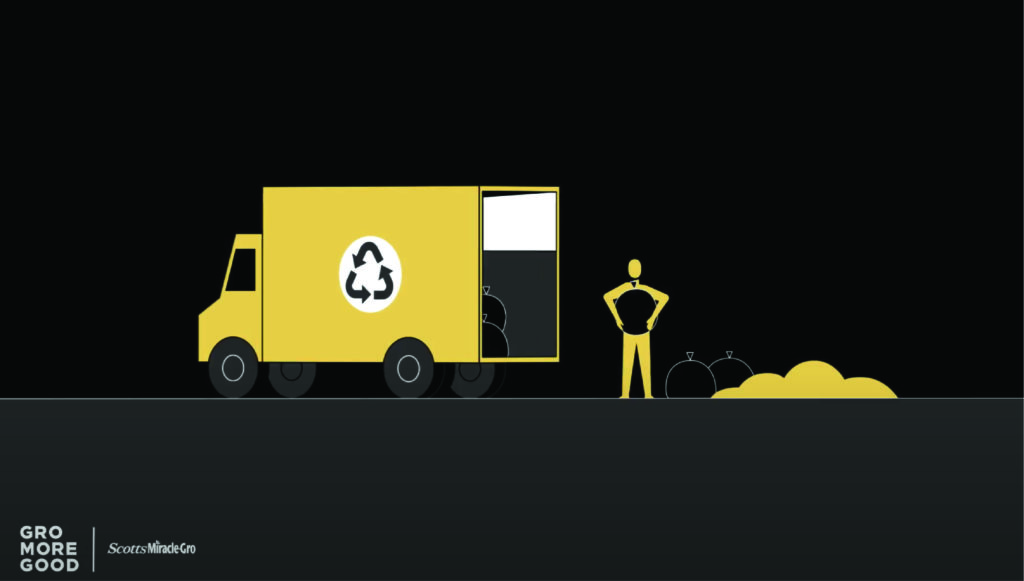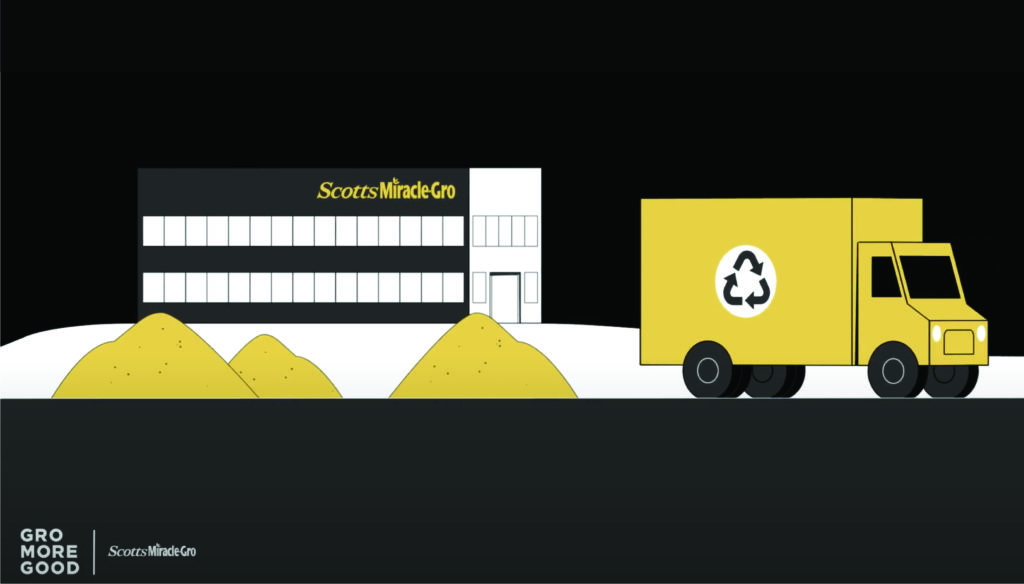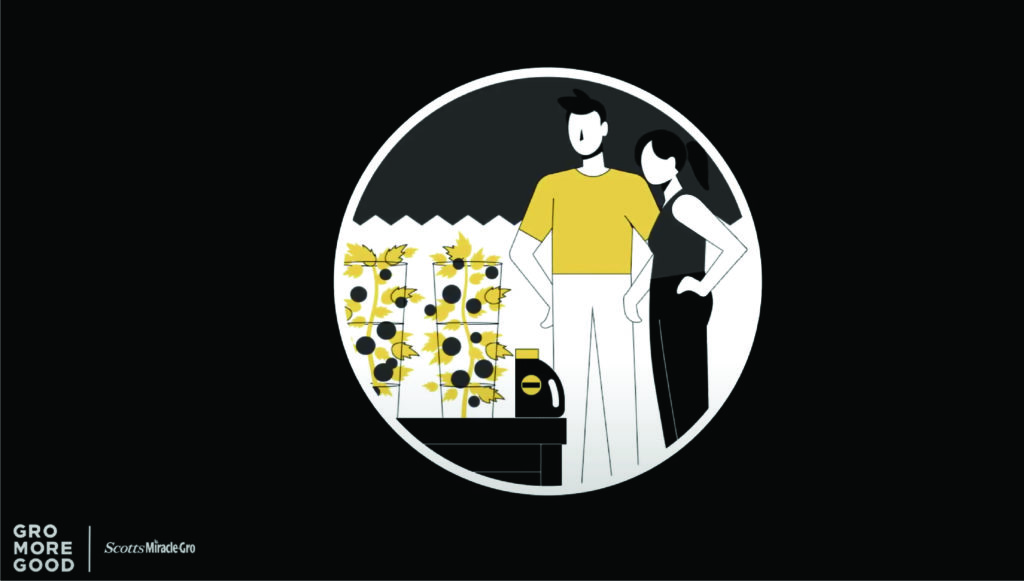We reuse 9 billion pounds of green waste annually in our products, keeping it local and out of landfills.
We’re passionate about helping people grow bountiful gardens and thriving greenspaces, while also creating products that benefit our environment. It’s an important way we GroMoreGood for people and our planet.
Each year, we work with communities to recycle nine billion pounds of green waste into our soil products, like garden soil and potting mix. That’s equivalent to approximately 1600 Olympic-sized swimming pools. This keeps it out of local waste streams and returns valuable nutrients back into the soil.
Not only do we keep nine billion pounds of green waste out of landfills each year, but we do it locally. Over the years, we’ve developed a network of hundreds of local green waste suppliers across North America. This helps ensure that each bag of our soil is locally sourced, produced and used, on average, within a 120-mile radius.
Here’s how it happens:
Finding local green waste
We work with hundreds of local organizations near our 38 production facilities across the U.S. to gather green waste and incorporate it into our composting process.
Into the compost pile
Once our production facility has accumulated enough green waste, it’s collected into a pile and often mixed with other waste materials to begin the compost process. The compost pile is turned, its temperature is taken and it’s monitored and aged for about three months.
Creating the exact “recipe”
Our scientists add manure or food waste to give the compost nutrients and achieve the perfect composition and chemical analysis.
A new home, locally
Once the compost meets our criteria, it’s mixed into our products, bagged and shipped to stores. Each bag of our soil is sourced, produced and used, on average, within a 120-mile radius. This cuts down on shipping emissions and helps grow local communities from start to finish.
Our work’s not done either. We continue to look for new ways to repurpose more waste. Several of our production facilities are currently examining the environmental and economic benefits of using more food waste compost in our products, and we expect to expand this to more of our facilities in the future.
Helping gardeners grow bountiful gardens with organic, local ingredients––It’s another way we GroMoreGood, together.
How you can help
In order to help ensure green waste is able to be recycled, there are a few easy steps you can take. Here’s what you should place in your yard waste bags: grass clippings, small sticks, leaves and landscape trimmings. Don’t put empty pots or plant containers in your yard waste bags. With more good green waste from consumers, we can help you GroMoreGood in your backyard, front yard, side yard or windowsill.





